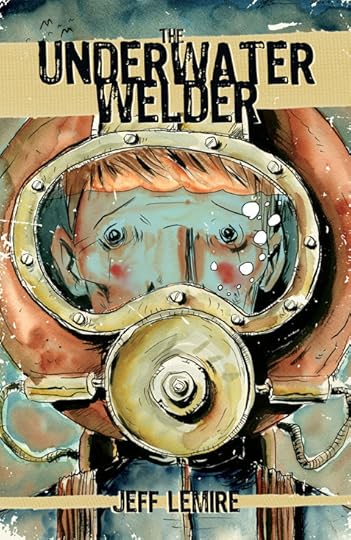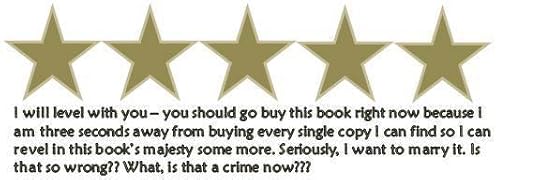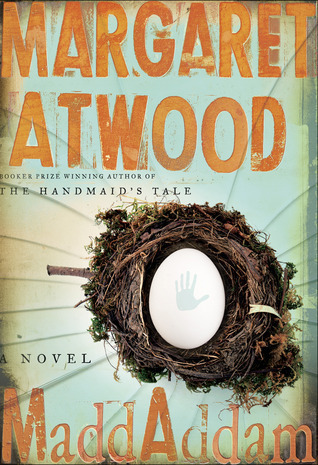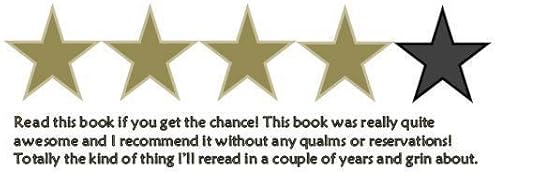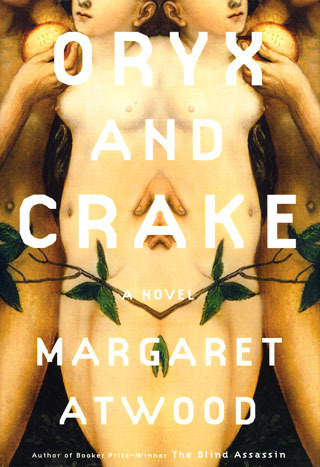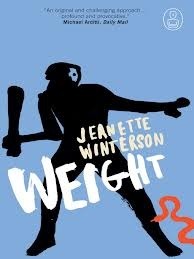B.R. Sanders's Blog, page 41
October 17, 2013
Book Review: STEELHEART
Steelheart, the first book in Brandon Sanderson’s Reckoners trilogy, is a terrifically plotted but flat book. It is fast-paced and intricate in its action, but it ultimately lacks thematic focus or characterization. And I am a reader that gobbles up deep characterization.
Steelheart takes place in a world where every superhero is actually a supervillian—imagine if every single X-Man was Magneto and you’ve got the gist of it. When a mysterious celestial body named Calamity appears in the sky one night, a handful of people begin to develop monstrous god-like powers. Some of the regular humans who remain are the Faithful, those who believe that eventually a good and heroic Epic will appear who will protect the weak and vulnerable unchanged humans. The hopes of the Faithful have been as yet unfulfilled: every Epic is a force of oppression and destruction. One of those Epics, an invincible man who goes by Steelheart, killed David Charleston’s father. David Charleston spends the subsequent ten years gathering information on both the Epics and the sole rebellious force of Reckoners—normal humans who assassinate Epics—in a personal quest to avenge his father’s death by taking out Steelheart.
What follows is some of the best written battle scenes I’ve ever read. Seriously, Sanderson wrote the shit out of those. There are also a pair of forseeable but well executed plot twists which set up the next books in the series. It is a decidedly readable book, and I fully intend to read the next two installments in the series. But this is not a book which will stick with me. The book itself suffers from the same pitfalls as the Epics themselves: it is one-dimensional, it has little heart, and it drives itself forward on force and momentum alone. The protagonist, David Charleston, is the latest bland installment of the plucky, scrappy kid looking to make good. He’s enthusiastic and clever and swayed by pretty faces and…that’s really it. The Reckoners come across as characters even less developed than David. There’s the scowling but very hot Megan who serves as David’s love interest and foil. There’s the soft-spoken giant Abraham who fixes things. There’s Tia, the cola-drinking researcher. There’s Cody, the peculiar Southern sniper*. And there’s Jonathan Phaedrus, called Prof, who is the remote and enigmatic team leader.
The problem with this—besides the fact that each of these are stock characters I’ve seen before and will see again with very little added—is that what should be differentiating details for this characters ring hollow. For a particularly egregious example, Cody, the Southern sniper, consistently misuses the word “y’all” throughout the text. For those of you who did not grow up in the South (and a cursory Wikipedia search shows that, indeed, Brandon Sanderson is a product of elsewhere), “y’all” is a contraction of “you all.” We use y’all to refer to groups of people, to indicate a collective or plural ‘you’. No one uses y’all when addressing a single individual. Except that Cody does this over and over and over again in the text. And for me, who is fluent in y’all, it was confusing as hell—I kept trying to figure out who the other person in the scene was. Take also the fact that before Calamity Phaedrus was a fifth grade science teacher who, despite his nickname (Prof), has no graduate training. Except that it is nigh impossible these days to teach without a Masters’ degree. All of this is to say that Sanderson was much more concerned with the cool lasers and gadgets (and they are very cool) which moved his plot forward than spending time getting the details of his characters perfect—and when those details are less than perfect what I, as a reader, was left with were a bunch of characters so lacking in dimensionality or realness that it was difficult to get emotionally attached to them no matter how fun the ride was.
*Note to non-Southerners: not every Southerner is a sniper, folks.


October 10, 2013
Book Review: EROS THE BITTERSWEET
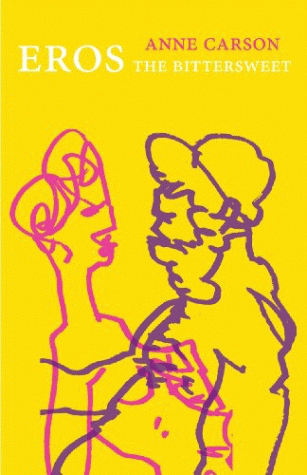
Eros the Bittersweet, by Anne Carson, is a short and curious set of essays about the nature of desire. That sentence alone captures very little of the scope and character of the book: Anne Carson’s Eros the Bittersweet is a reflexive, paradoxical, expansive and narrow work. It is fine as filigree in its craftsmanship, and Anne Carson, as always writes in an easy, conversational, endlessly approachable style. It is, I can see, a great scholarly work, a great piece of thought, but it is unfortunately not a book I particularly enjoyed.
Let me explain. Anne Carson starts the book with a fragment of a poem by Sappho:
Eros once again limb-loosener whirls me
sweetbitter, impossible to fight off, creature stealing up
The rest of the book is devoted to exploring what this phrase Sappho has coined—sweetbitter*, or as we more commonly refer to it, bittersweet—really means. Where does it come from? What is this dyadic, split experience we have of desire? Her explorations of the bittersweet nature of Eros take her through the lyric poets of Ancient Greece, through the novelists of Ancient Greece, through paintings, through ice, through insects, through modern novels. The breadth of sources Anne Carson marshals in her scholarly inquiry of Eros’ bittersweetness is sweeping. The point of desire becomes first flexible, then reflexive—what we desire, she argues, is the act of desiring. Then, she employs this lens to literature, to the alphabet itself, to the act of reading and writing. She poses the reader of a work of fiction as a lover (one overcome with Eros), but poses the writer of a fiction as a nonlover. The ideas are rich, endlessly rich. Sometimes the work borders on wordplay, but even then Anne Carson is a clear-eyed enough thinker that you go along with it.
Ultimately, though, what was most interesting to me about the book were the things it did not address. The whole frame of the book is from the lover’s perspective—a perspective Anne Carson (and Sokrates, and Sappho, and Aristophanes) claims is a position of utter loss of self-control, of selfishness, of personal obliteration. It is a position of devotion to the beloved, but really just the idea of the beloved and really just as long as the beloved is out of reach. It is clear, to me, where the bitterness of love comes in: the mismatch between the lover and the loved. A mismatch, it needs to be pointed out, that currently and has historically manifested as violence wrought on women’s bodies. Emotional violence, physical violence, sexual violence, all of it. This consistent idea of loss of self-control, of Eros as a force beyond ourselves that we can’t (and Sokrates claims we shouldn’t) fight against is the root of rape culture we can trace all the way back to ancient Greece. And, excepting Sappho and a line or two from Virginia Woolf’s The Waves, the voices Anne Carson uses and engages with throughout the text are those of men. Yes, sometimes a great beauty can come from desire. Sometimes it’s reciprocated. But the destructiveness of it when it’s not reciprocated is haunting to me, and that’s something that Anne Carson deftly seems to sidestep.
Related to this is the fact that the beloved in Anne Carson’s many triangulations of desire never becomes a subject in their own right. This is a point made more than once very explicitly—Anne Carson dissects desire and comes to the conclusion that the beloved as a reality (as a real person) matters very little. The beloved is only ever a symbol for something the lover wants but can’t have. And I would agree that in many cases, especially in terms of infatuation, which seems to be what she codes as Eros, this is true. But the effect of it combined with the continual assertion that under the spell of Eros one has no control is to dehumanize the beloved. The beloved has no voice, no relevant needs, no respected boundaries. In terms of Freud, whom Anne Carson invokes more than once in the text, the beloved is always and statically an object to the one who loves them, and never a subject. There is embedded in this the idea that once the beloved is real enough, three-dimensional enough, to become a subject they loose the seductive quality that infatuated the lover in the first place. How lonely that is if it’s true.
It was a strange book for me to read. As you can see, I struggled with the structure of her arguments and their precepts. Confusing me further was that the book reads, to me at least, as a celebration of the powerful whirlwind that is erotic desire. The last chapter discusses how empty and bland a city without Eros would be. Earlier in the book, she discusses Phaedras, who argues with Sokrates about the merits of a speech by Lysias concerning whether it’s better to be in love and try and freeze time and the beloved even while knowing to do so will end in disaster or to love dispassionately (as a nonlover) and allow the beloved space and room to grow. And the thing is, I like boundaries. I like companionate love, the safe and stable kind where each person involved is a subject, where there is room to grow. I have always been leery of the intoxication of love, of the idea that infatuation is overwhelming and inescapable. There are levels of desire, multiplicities of love, but Anne Carson here defines love and desire very strictly and very narrowly in ways that never sit comfortably with me as I read the book.**
It’s possible I’m misunderstanding her or misreading the text. I am no classicist, and many of her references went over my head. I do believe, and will admit, that I took a more literal approach the to question of erotic desire than she presented. I was unable to loose erotic desire from sexuality in order to climb the abstract slopes with her. I was unable to pull erotic desire out of its cultural-historical contexts, and despite drawing from so many times and places this is not a book overly concerned with cultural-historical contexts. That said, the book ends with this:
It is a high-risk proposition, as Sokrates saw quite clearly, to reach for the difference between the known and the unknown. He thought the risk worthwhile, because he was in love with the wooing itself. And who is not?
I finished the book, and all I could think was this: I’m not. I am not in love with wooing; wooing makes me endlessly nervous. I am in love with having already wooed, having already learned the unknown.
*If you ask me, Sappho had the right of it: ‘sweetbitter’ has a better cadence and a more pleasing ring to it than ‘bittersweet.’
**And this is peculiar because in Autobiography of Red and it’s companion piece Red Doc> she explores the variegations of love with such finesse and nuance.


October 6, 2013
Read “The Other Side of Town” at READHEAD EZINE!
Hi all,
I am super proud to announce that Redhead Ezine has chosen to publish my short story “The Other Side of Town!” You can read the story for free on Redhead’s website here.
Redhead is a magazine devoted to “the adventures, quests, heroism, and the intrigues of secondary-world fantasy.” I am proud and excited to join the Redhead community.


October 2, 2013
Book Review: THE UNDERWATER WELDER
The Underwater Welder by Jeff Lemire is a beautifully drawn graphic novel about a man named Jack Joseph caught first metaphorically and then literally between his past and future. When I say beautifully drawn I mean it—the art has a sketch-like quality, an impressionistic rendering that has a surprising fullness in the details. It’s rough and encompassing, much like the story itself. Lemire is a gifted visual storyteller (something I admire as I myself am so dependent on words); he makes great use of changes in the level of detail to signal disturbance. He uses the traditional panel structure of a comic to great effect and plays with it, too, stretching one scene across twelve panels on one page and using the crossbars of a window to mimic the boundaries of the panel in the next.
To understand Jack is to understand his father: a man named Pete who made his living by diving for odds and ends he sold at a pawn shop. A man who drove his wife away by drinking too much. Like a lot of alcoholics who find themselves embedded in families, Pete Joseph is desperately sad, desperately out of control, and makes a lot of promises to his son which he can’t keep. He goes diving one Halloween night when Jack is a kid and disappears; the town presumes him dead but Jack can’t shake the feeling his father is still out there somewhere.
Jack Joseph is thirty-three, the same age his father was when his father disappeared. Jack makes his way as an underwater welder on an offshore oil rig, diving just like his father used to, and he’s married to a woman named Susan. They are expecting their first child any day. Jack can handle the immense pressures and darkness of the ocean floor, but he can’t handle the looming pressure of his impending fatherhood or the dark shadow of his own father’s disappearance. One day while diving he sees something that can’t possibly be there. He fights with Susan and winds up diving again only to end up in a space that seems ripped out of time, a sort of purgatory-like holding tank of his own memories.
This book hit me very hard. I grew up with negligent, promise-breaking alcoholic parents. The imminent birth of my own kid sent me head-first into a maelstrom of Unresolved Childhood Issues, too. Like Jack, I had to make the choice between wallowing in the past and embracing the future. I, too, was haunted by the specter of turning into my parents. I didn’t go into the book blind—the back copy talks about parenthood and the ghost of a father, etc—but I didn’t expect Jack’s story to mirror my own so closely. I wonder how much of this is drawn from Jeff Lemire’s personal experiences. The book explores these feelings and themes so deftly, with such pitch-perfect resonance, that I wonder if it’s possible for someone who hasn’t lived through it to capture it so well. I can already see I will fpoist this book on people who are having difficulty navigating the tricky waters of becoming a parent. I can already see it’s a book I’ll return to over and over. I give it five stars out of five stars, but if you are not a parent who has grappled with the demons of your own unreliable parents your mileage may vary.


October 1, 2013
Book Review: MADDADDAM
This review contains some spoilers for the other two books in the trilogy, so skip this if you haven’t read those. My review for Oryx and Crake is here, and my review for The Year of the Flood is here.
I read MaddAddam, the third and final book in Margaret Atwood’s dystopian trilogy of the same name, in an indulgent fervor. I neglected my own writing regime to read it, read it past my bedtime. I went camping this past weekend, and instead of hiking or moving around in some semblance of an athletic and rugged way, I set up my tent and curled up on top of my sleeping bag to read more MaddAddam. I consumed the book, swallowed it whole. It’s hard to tell if I liked it or not—I am pretty sure I did—but I can say with certainty that I was engaged with it.
Ok, so the book itself: unlike Oryx and Crake and The Year of the Flood, where much of the action and plot really takes place in the book’s narrative past through the use of flashbacks, the action in MaddAddam is pretty evenly split between the book’s diegetic present and past. There’s even, at the end, a bit of diegetic future thrown in. In my review of The Year of the Flood I discussed how the first two books of this trilogy were mirror images—structurally similar but inverted in terms of their themes and respective focus. I wondered if MaddAddam would follow suit or attempt to unify the other two books. MaddAddam, I think, establishes itself firmly as a concluding volume through its attempt to unify the other two books in the series. MaddAddam picks up right where The Year of the Flood leaves off and carries the narrative thread of what happens to Toby and Ren and Jimmy in the book’s present in the lonely aftermath of Crake’s Waterless Flood. At the end of the previous book, the Crakers—Crake’s genetically engineered ‘perfect’ humans, part of whose perfection seems to be an utterly guileless nature—set free a pair of vicious criminals into the woods. Much of the plot of MaddAddam is driven by this pair of murderer/rapist/all around evil guys as they skulk around the protagonists’ homestead, pick off the wildlife, and engage in a lot of psychological warfare. The book’s resolution, such as it is, comes as a result of a climactic standoff between the protagonists, the MaddAddamites, and the criminals in the Paradice Dome where the Crakers were engineered. Intercut with this is the story of Zeb, a MaddAddamite and former God’s Gardener who ends up as Toby’s lover, was Ren’s stepfather, and knew Crake when Crake was a boy. The origins of the God’s Gardeners cult is revealed through Zeb’s back story, and through him we get deeper insights into the ever-enigmatic mad scientist Crake.
That’s the plot, but as with all of Atwood’s work the plot plays second fiddle to its themes. One of those themes is the power of narrative. This theme has been a unifying point through all three books, though how it’s been perceived and presented has varied from character to character. While the other two books in the trilogy are fairly straightforward in terms of how they’re told, this one is more complicated. In Oryx and Crake and in The Year of the Flood the story is revealed through one or two people’s viewpoints, and those viewpoints are static inasmuch that we know it’s Jimmy or Toby or Ren thinking these thoughts, having these memories, experiencing this or that thing. MaddAddam confuses things: Toby is the protagonist, for the most part, but what we, the readers, actually get is a mix of Toby’s thoughts, Toby’s experiences, Toby’s retellings of other people’s stories and, eventually, other people retelling Toby’s story. What we find out about Zeb’s history is both in and not in his voice—the stories start from Toby’s perspective as the pair lay together in the dark, and eventually Zeb’s voice appears to take over. Occasionally the stride of his voice is broken when Toby interrupts. Then, Toby takes his stories and translates them into myth and legend for the Crakers. Toby herself becomes both the teller of tales to the Crakers and a tale to be told by the Crakers by the end of the book. While Jeanette Winterson in Weight dealt with how we use narrative to construct ourselves Atwood here is highlighting the power of shared narratives to construct a community. It’s a theme that richly permeates the book, start to finish, in both subtle and obvious ways. It’s a theme that builds on pieces from the other two books. It’s masterfully done, especially given that there is so much potential for an approach to narrative this way to be confusing but the book remains clear throughout.
So, that’s one theme I saw coming long before I cracked open the book. Way back in Oryx and Crake I picked up on the idea that Atwood was writing these books to show us how redemptive and damning narrative can be, that we can change our trajectories by changing the kinds of stories we tell ourselves. That’s what speculative fiction is all about. But there was something else which crystallized in MaddAddam a theme, or rather an open question, which I did not see coming. Maybe I’m the only one who didn’t; I don’t know. The question is this: what is it that makes us worth saving? This questions starts about humanhood—what makes us human? Are the Crakers, with their genetic modifications and guileless, deeply innocent frame to the world, are they human? What does it mean if they aren’t? What does it mean if they are? While these questions have been lurking along the outskirts of the text in both Oryx and Crake and The Year of the Flood they come to the forefront when Toby and Ren bring a very sick Jimmy to the MaddAddamite compound and the Crakers insist on following. The MaddAddamites propose scientific delineations: are the Crakers capable of abstract thought, can they produce viable offspring with a normal human, etc.
The question of humanhood turns into a question of personhood over the course of the book. The Pigoons, huge pigs engineered to grow replacement organs for the human elite including human neocortex brain tissue, end up in an alliance with the MaddAddamites. The Pigoons have been around since the very start of the series—Jimmy’s father used to work on them in one of the science Corps—and hints have been dropped along the way that they have developed sentience. But, still, the moment where one of the young Crakers literally communicates with a Pigoon and serves as a translator between the Pigoons and the MaddAddamites is a moment of profound strangeness not least because it shakes what we construct as personhood at its foundations. And in that moment, we gain great insight into Crake’s plan, his vision, his reasons for spreading a swift and deadly plague across the world. If the natural world demands we adapt or die, then the only way destructive humanity as it exists to adapt is to die, for us to replace ourselves with more harmonious creatures, for us to make space for something to be a person besides ourselves. The moment this happens is wrapped up in a swiftly moving plot, with little textual time to chew over it or ponder it. I wanted the book to slow down a second, to unpack it, but it pushed on ahead.
I rate this book 4 stars because it’s close to perfect but not quite. A side plot of the book, the search for Adam One of the God’s Gardeners cult, fizzles and dies without the emotional resonance it needed. I could have done without some of Toby’s repetitive insecurities about her relationship with Zeb—while realistic I feel they defanged her character somewhat, which was a pity since she’s such a tough, strong, fallible and emotionally truthful character. And, as I said, the pacing of the plot sometimes ran roughshod over the thematic developments. In spite of all that, MaddAddam is a wonderful and rich book in its own right, peculiar and heavy, and a masterful end to a trilogy. In terms of its ability to deepen and provide closure to a very good series of books it reminds me of Pullman’s The Amber Spyglass*.
*If you haven’t read Pullman’s His Dark Materials trilogy you really, really should.


September 26, 2013
Book Review: THE YEAR OF THE FLOOD
WARNING: Review contains spoilers about the plot of Oryx and Crake, the first book in the MaddAddam trilogy.
Do you ever have the experience of reading a book and liking it and not actually remembering all that much about it? Where you’ve read it, perhaps, too quickly and when it’s done you’re left with the stark knowledge that you like it—maybe even loved it—but that knowledge is not tied to anything specific? I am pretty sure that’s what happened to me the first time I read Margaret Atwood’s The Year of the Flood, which made rereading it a peculiar experience. Actually, this happens to me a lot which is one reason I tend to reread books so often.
Back to the book. The Year of the Flood is the second book in Atwood’s MaddAddam trilogy but I would not call it a sequel. The events in The Year of the Flood happen, for the most part, concurrently with the events of Oryx and Crake. Sometimes it’s the same events happening as in Oryx and Crake but from a very different perspective. The last third or so of The Year of the Flood dovetails with the end of Oryx and Crake in such a way that The Year of the Flood picks up the tail end of Jimmy’s narrative in Oryx and Crake and extends it a little further—but just a little further, and like the ending of Oryx and Crake, the book ends with an abrupt cliffhanger. Really I think the best description of The Year of the Flood is a companion piece to Oryx and Crake. I wonder about the effect of order since in terms of plot one does not really precede the other. I wonder what it would be like to read The Year of the Flood first and then read Oryx and Crake.
As much as it is a companion piece, The Year of the Flood is an inversion of Oryx and Crake; where Oryx and Crake was a story of the privileged, the masculine, of reductive science The Year of the Flood is a book about the feminine, the marginalized and victimized and of spiritualism. The Year of the Flood follows two viewpoint characters: Toby, a woman with a vicious and lengthy streak of bad luck matched only by her inherent talent to survive, and Ren, a girl whose naivete and frivolity masks an impressive adaptability. The connection between Toby and Ren is that, for a time, both were members of a religious cult named God’s Gardeners. God’s Gardeners is a pacifist and technophobic ecoreligious group preparing for the apocalypse—the Waterless Flood—which they are sure the increasingly morally bankrupt scientific ventures of the ruling corporations are sure to bring about. And we know from having read Oryx and Crake that God’s Gardners’ prediction is true: Crake unleashes a virulent and deadly virus that elminates the vast majority of the world’s population, completely and utterly destroying civilization as we know it. God’s Gardeners, in a move that strikes the readers as prescient given we already know what will happen but a move that seems bizarre to those in the books before it happens, build secret Ararats, caches of foodstuffs and necessaries to get them through the Waterless Flood in one piece. The preach, they build gardens and keep bees, they sequester themselves from the rest of the pleebland mobs and gangs. They harbor runaway scientists from the Corporation Compounds who have had pangs of conscience. God’s Gardeners become a sort of character in itself; each section of the book is preceded by a sermon spoken by Adam One, the leader of the Gardeners, and each of his sermons is immediately followed by a Gardener Hymn*.
Over the course of the book God’s Gardeners has many faces—harmless, heroic, broken, trapped. We see the functioning of the Gardeners at their prime both through the eyes of Toby, who ascends through the cult’s ranks and becomes a leader within it, though begrudgingly, and through the eyes of Ren, who is raised among the Gardeners during her adolescence. There are other things, too, that we get this multifaceted view of: Jimmy, the protagonist of Oryx and Crake flits in and out of Ren’s life**. We see the things Crake did when Jimmy wasn’t around. We see a whole other side of the world than the side Jimmy showed us, namely the poor and broken places, the dregs of this world. The places the Corporations have written off, and the people the Corporations have written off. And, likewise, we see Toby through her own eyes and through the eyes of Ren at multiple points in time. And Ren through her own eyes and through the eyes of Toby at multiple points in time. Oryx and Crake dealt a lot in fixedness—one narrator, one linear story, one set of values. The Year of the Flood deals in multiplicities, in complexities—multiple interacting narrators, a crowd of stories, a pantheon of value sets which change from person to person and within a single person over time. Oryx and Crake seems to focus on the absolutes of identity where The Year of the Flood explores the relational interdependencies that shape us all.
I find it hard to rate this book by itself, especially given that so much of my experience of it and thinking about it is tied to Oryx and Crake. I am now leaning towards rating them of a piece together, which after I read MaddAddam may be revised. But for now, I give it four stars for its depth, for its crystalline characterization and for the scope of its examination of how actions can be spiritual without faith behind them.
*The book states these are from the Oral Gardener Hymnal, but considering that the point is made more than once that the members of God’s Gardeners are wary of writing and refuse to leave written records I can’t help but wonder who compiled the hymnal. Perhaps this is something Atwood will address in MaddAddam. More likely this is proof of my nerdy fanboy ovethinking it mind.
**At first this bothered me; it seemed too pat and too convenient for Jimmy to keep popping up over and over again. But then I remembered how sequestered the characters in these books are—the Corporations lock you in, track your movements. Geographic mobility is long gone. And in a world like that you may indeed run into your high school sweetheart over and over and over and over. That utter lack of escape from your past sure sounds like hell.


September 24, 2013
Writing EXTRACTION – entry 11
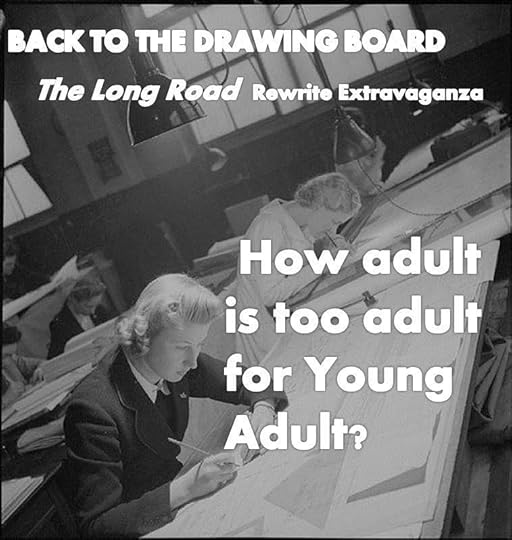
so many questions!!
This is the eleventh in a series of posts about the redrafting process of THE LONG ROAD which will be composed and published as I rewrite the book. The other posts in this series are here.
I know I’m getting close to the end of a piece when I start brainstorming for the next one. Unlike in my personal life, in terms of writing I am a serial monogamist: slavishly devoted to one piece…for a while. I can see them through the end, but as the story wraps itself up I get a wandering eye*. And so it is with The Long Road rewrites (which I’ve tentatively titled Extraction.
I’ve been working steadily on the manuscript. Between a particularly hectic period at work and a particularly hectic period at home I haven’t had much of a chance to blog about the rewrites, but they’ve been going well—lots of bus writing, you know. The draft will definitely need a second pass to clean up characterization and clarify themes, but the draft looks really solid. I’d been shooting for a rewrite which streamlined the previous draft down from a sprawling 150K word novel to a tighter 70K word young adult novel. Parallel storylines were jettisoned, the cast of characters was pared down. I’m entering the last section of the book at the 63K word mark, so I’m right on schedule.
But is it a young adult book? That part I don’t know. YA seems to me a slippery construct, probably in no small part due to the fact that I was a precocious reader who read frankly inappropriate stuff quite early. I’ve read most of the YA books I have as a fully-fledged pushing-thirty adult. I guess what I mean to say is that I set out to rewrite this book as one I would have wanted to read as a young adult (which is what, when you’re 14? 15ish?). But there’s part of me that suspects that if I tried to shop this around as a YA novel it would be deemed too adult. There’s some drugs in it, and not all of them are portrayed in a DARE-ish JUST SAY NO kind of way. Addiction is explored somewhat. There’s sex in it, some of it fairly explicit (though there are plot reasons for that). All the sex is consensual, a lot of it is queer, and all of it is of the positive life-affirming variety, even when it’s not a 1:1 match with love. There’s surprisingly little violence in the book. This seems appropriate to me.
But then I think about The Hunger Games. Those books are all violence, no sex. Some chaste kisses, that’s it, though kids get gutted and torn apart by genetically mutated dogs. Somehow that’s more ok for young minds to read than two women having heartfelt and thoroughly enjoyable sex together? I don’t know. It makes no sense to me. Which is not to knock The Hunger Games at all—I love those books. They are fantastic, and they explore a lot of ideas about PTSD and heroism and propaganda that I think are absolutely appropriate for young adults. But America, with its Puritanical streak, is so much more ok with kids reading vicious ciolence than positive portrayals of sexuality. It just so strange.
Ultimately I’m not sure it matters much one way or another. Hopefully this book will find its audience, and its audience will probably be some adults and some young adults. I think it will probably get out there through a small press, likely not one with a particular focus on YA lit, so this is probably all a moot point. But it’s food for thought.
*I’ll expand on this in another post soon. YOU GUYS I’M VERY EXCITED ABOUT THIS ONE.


September 19, 2013
Book Review: ORYX AND CRAKE
Since MaddAddam, the concluding book in the trilogy which begins with Oryx and Crake, just came out it seemed like an ideal time to reread the other two books in the trilogy. I am really excited to see what Margaret Atwood does with MaddAddam given that Oryx and Crake and its follow-up, The Year of the Flood are so different in focus. Or, that’s how I remember them; I’m just about to crack The Year of the Flood back open, so we’ll see if that opinion still stands when I’ve finished it.
Back to Oryx and Crake. The plot is relatively straightforward: we follow a man named Jimmy from childhood to adulthood whose childhood friend and later employer, Crake, is a mad scientist. And we follow Jimmy as he tries to navigate a post-apocalyptic world caused by Crake. The book opens some years after this mad scientist has done his thing. Jimmy is both alone and not alone—Crake created an enhanced group of human beings, genetically lab-grown to perfectly fit their surroundings where Crake did his best to splice out ‘undesirable’ elements of the human fabric. Jimmy tends to these people, whom he calls the Crakers, who are human but such a different kind of human that he is still utterly alone.
The narrative structure is split between chapters set in Jimmy’s present, where he tends to the Crakers, and his past, which explores the world which led up to the birth of the Crakers and the destruction of everyone else. But the story is very clearly rooted in Jimmy’s present; the chapters set in the past have a deliberate haziness to them, and Jimmy interjects commentary on his memories. Atwood makes it clear that rather than an objective narrative jump to the past what we are reading is present-day Jimmy remembering his own past. Like Winterson’s Weight, this book explores the nature of narrative and how we use interpretations of our past to construct our own futures.
The idea of art and narrative as hard-wired into human beings, as one of the intangible things that makes us human, is a theme in the book. Jimmy is a self-described ‘word person’ in a world where words no longer get you very far. Atwood’s future is a destroyed and severely overpopulated Earth where capitalism has run amok. Global warming has ruined the climate, leading to the destruction of many major cities. Class is clearly defined by occupation—the upper classes, uniformly technical and biological geniuses working in elite labs at elite corporations, live in sealed-off and secure corporate communities. There, these scientists are protected from the biological warfare and espionage from competing companies. The middle class live in Modules, and everyone else lives in the pleeblands. Jimmy, the product of two elite scientists, grows up in corporate compounds. The pleeblands are places of myth, of seductive legend, to him and as a reader we see very little of how the poor in Atwood’s world live*. So, there’s Jimmy, who lacks his parents’ capacity for numbers and science stuck in places that do not value his gift for empathy and wordplay. Coupled with his best friend Glenn (who becomes Crake), who is an obvious wunderkind, and Jimmy is left with an inferiority complex the size of Texas.
I read this book the year it came out, in 2003. I remember being somewhat fascinated by it but not liking it much, which was disappointing as I was and still am a major Atwood fan. I was in Boston, living on the couch of a friend and elbows-deep in a summer of socialist organizing. I’d scored a shitty summer job on campus which I abandoned on the spur of the moment to couch-surf and read a lot of Trotsky and argue with people about whether we, as socialists, should support and campaign for Ralph Nader. I was driving a lot of conversations about masculinity in activist spaces and how it was alienating female members of our organization. This was the summer I began to embrace my proletariat roots instead of trying to shed them; a moment, if you’ll indulge me, of internal class crisis. I picked up Oryx and Crake for some light reading, and frankly I picked it up at the wrong moment in my life. Jimmy, as a narrator, was not someone I could connect to at that moment in my life—his male, upper-class privileged voice and viewpoint was simply a bridge too far. The worldbuilding was fascinating as it dovetails so nicely with Marxist theories of late-stage capitalism and imperialism but I never developed an emotional connection with the book.
I read it now as someone ten years older. As someone who has, in some very real sense, sold out. I’m middle class now, a thing which I struggle with but is very obviously true. I’m reading it again after doing some heavy-duty renovation on my own psychological landscape which has left me a much more compassionate and less judgmental person. This time around, I connected much more with Jimmy, especially his imposter syndrome. My initial reading of the book as a self-righteous 19 year old was that it lacked depth, that is was a bit obvious. But I’m not sure that’s true. It’s certainly the case that Atwood as a writer creates stark worlds where Things Have Gone So Very Wrong, but it’s also true that within those worlds she’s a writer of immense subtlety. I mean to say that the worlds she creates are not subtle, but that the people within them still are. This book, I think, is less a warning about capitalism run rampant or the dangers of playing god with science. I think it’s more about the things that Crake tried and failed to breed out of his batch of ‘perfected’ humans: our capacity and need for story, for meaning. I think this is a book about what happens to a culture where we abandon art, where our creative meaning-making of the world around us is seen as less-than and unnecessary. When we do that, Atwood seems to say, we lose our souls. In a sense, then, our compulsion to create and to describe and to enrich is intimately tied with our embedded altruism. All of which is to say that I understand better now why Atwood chose hapless Jimmy, word-oriented and patient Jimmy as her narrator. He’s not a good man, but he’s an exceedingly human one.
*Or, more accurately, we see very little of how the poor live in Oryx and Crake. We see a whole lot more of life in the pleeblands in The Year of the Flood.


September 13, 2013
Book Review: WEIGHT
Weight by Jeanette Winterson, part of the Canongate Myths collection along with Atwood’s Penelopiad, is a deconstructed retelling of the myth of Atlas. That sentence alone fails to capture the sweep of this slim little volume, or the depth to it. The book is really about the way we use narrative to construct ourselves and our identities.
The two central characters of the book are Atlas, the titan monstrously strong enough to support the entire cosmos, and Heracles, the half-human half-divine hero who, in the course of his labors, shoulders Atlas’ burden for awhile. In Winterson’s portrayal, the two stand in sharp relief: Atlas is silent, still, thoughtful, patient. Heracles is all bluster, all action. Over the course of their interactions and their divergent lives, though, Winterson shows how each of them, at their core, is driven by the same thing: a sense of predetermination, of fate. I say a ‘sense of’ because once the book establishes this it begins to methodically deconstruct the idea of fate. The nature of self-fulfilling prophecy is explored in some depth, casting what both Atlas and Heracles perceive to be their fate, this course of their lives determined out of their grasp, as a fact of inertia and momentum from the choices they themselves have made. Much use is made of the idea of self-composed narrative as a manifestation of this: more than once Atlas “wants to tell the story again,” this time a different way, this time an attempt to push himself past the boundaries he’s built for himself. The book, then, is a meta-narrative as much as it is an actual story. Heracles falls prey to his self-made fate, but by the end of the book (set, curiously, during the space race and featuring poor Laika, the Russian cosmonaut dog sent to die in space) Atlas, sitting in the dark emptiness of space, telling and re-telling his story, manages to shrug his fate off. Thus, the double-edged sword of narrative—its capacity to constrain us and its capacity to set us free—is explored here.
There is another character in this book, and it’s Winterson herself. The thoughts of Atlas are cut with occasional interludes from Winterson herself, who draws parallels between her lived experiences—childhood abuse and the resulting need for self-sufficiency, difficulties with intimacy, difficulties escaping the gravitational pull of her own life choices—and the struggles of Atlas. The result is a deeply personal exploration of the meaning of this particular myth. As someone with strikingly similar internal struggles as Winterson, this was a captivating thing to read. I recognized in her writing about herself the marks of a similarly wounded person: the feigned emotionlessness of the retelling, the matter-of-fact tone, the minimizing of the damage done. It’s incredibly honest and incredibly personal writing, and she incorporates it into the text in a way where it supplements the story she’s telling rather than the other way around. Even with Winterson’s meditations on herself as a modern-day Atlas the book remains the story of Atlas the mythological figure.


September 8, 2013
Book Review: WOMEN ON THE EDGE: FOUR PLAYS BY EURIPIDES
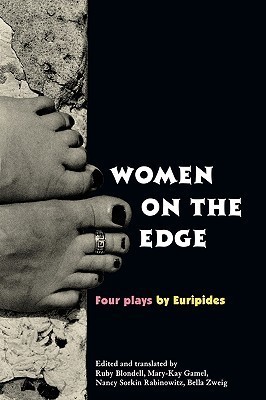
Women on the Edge of INSIGHTFUL AWESOMENESS
I picked up this book on a recommendation from a friend who is in the midst of a Greek tragedy extravaganza. She’s been reading The Iliad and read part of this book in line with it. What caught my interest was her description of Euripides’ Helen, which explores the idea that perhaps Helen was not in Troy*. Perhaps the woman in Troy was a facsimile of her. If this was the case, what kind of life would the real Helen be living tucked away in a far-off land, knowing that a war was being fought over her but never knowing the specifics? I was intrigued.
I’d never read Euripides, and I have a solid lay knowledge of Greek myth but I am certainly no classicist. This volume of four of Euripides’ surviving tragedies is perfectly interpretable for someone like me with an interest and passing knowledge of the subject at hand but no expertise. Drawing from their feminist traditions, the authors root each of the plays firmly in the socio-cultural context in which they developed: the book begins with an in-depth historical survey of Athens and Athenian life at the time Euripides was writing his plays, and a more specific and detailed historical analysis is presented as an introduction for each of the four plays (Alcestis, Medea, Helen and Iphigenia at Aulis). I was expecting the introductions to be dry, and to be either pitched too low or too high for me in terms of content, but the introductions are well-organized, and therefore clear and easily navigable, well-written, and comprehensive in terms of the depth and breadth of information presented.
The translations of the plays themselves were obviously done with care. They read well, and they read easily. There seemed to be little attempt to ‘prettify’ the language, to make the dialogue stately and stuffy, which I appreciated. The text of the plays read simply and clearly on their own, but each play is extensively footnoted with additional information which fills the reader in on references or pieces of context which we may have missed. I, myself, compulsively read footnotes when the tiny superscript number interrupt the flow of text, which meant I was flipping back and forth between the play and the appendices of the book several times per page, which was kind of annoying, but if you are the kind who can pass over a footnote without your curiosity getting the better of you then this won’t present a problem to you–the footnotes are interesting, but you can follow the plot of the play easily without them.
The feminist analysis of each play was fascinating. The authors’ introductions provide the context for both the plays themselves, but also social constructions of gender in ancient Athens. The fact that women characters in Greek drama were played by male actors is pointed to more than once; each of these four lead female characters can be interpreted and understood through multiple lenses at once. Their prominence breaks boundaries since Athenian women were largely sequestered, but given that they are written by a male playwright and portrayed by make actors, how much of a hidden women’s narrative are they really part of? The lead characters themselves present a range of idealized female archetypes: Alcestis as the self-sacrificing best iteration of womanhood; Medea as the aggressive and selfish wronged bride; Helen as the ‘bad’ woman, the unfaithful whore (who is paradoxically actually faithful); and Iphigenia, a young and naive woman who sacrifices her innocence for the goals of the men around her. While each of these plays present some crystallization of either good or bad womanhood according to ancient Athenian customs, Euripides writes each as a smart, commanding strong presence, and each has a deeply unique and individual voice.
I highly recommend this book. As I read it, I found myself retelling each of the plays with urgency and gusto to anyone who would listen (and you would be surprised how many people would willingly listen to me do that; I have patient friends). It’s also pushed me to read or revisit retellings of Greek myths, specifically Weight, Margaret Atwood’s The Penelopiad and Ursula K. Le Guin’s Lavinia.
*YOU GUYS I AM THINKING OF TRANSLATING THIS IDEA OF THE IDEA OF HELEN STARTING A WAR WITHOUT ACTUALLY BEING INVOLVED IN IT INTO SCIENCE FICTION TO EXPLORE THE CHANGING NATURE OF NEWS AND COMMUNICATION. So stay tuned for that.



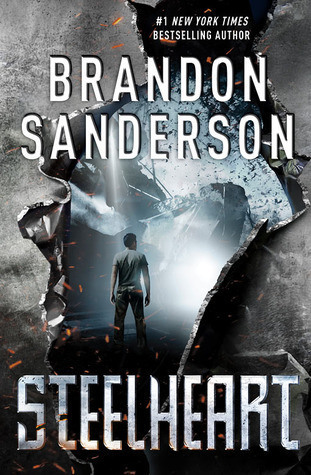

![CropperCapture[16]](https://i.gr-assets.com/images/S/compressed.photo.goodreads.com/hostedimages/1381268760i/4619693._SX540_.png)
